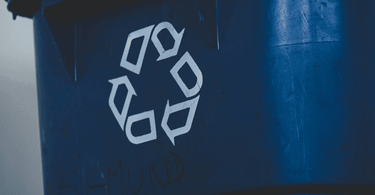When it comes to feeding our pets, we often focus on the food itself, but let’s not forget about the packaging! It plays a vital role in keeping that food safe and nutritious from the factory to our homes. Plus, it provides us with all the important info we need to make the right choices when feeding our pets, such as feeding guidelines.
What types of pet food packaging are there?
Pet food comes in all sorts of packages—think cans, pouches, aluminium trays, and bags. These different options are made from materials like paper, cardboard, plastic, and aluminium, each chosen for their ability to keep the food fresh and safe. This variety helps pet owners find just the right product for their needs, although some are better for the environment than others.
Pet food packaging and sustainability
Despite all the great options out there, the pet food industry has some hurdles to overcome, especially when it comes to sustainability. While some materials, particularly certain plastics, can be fully recycled, the systems for collecting and recycling them aren’t always up to par. This gap means we need more innovation in recycling and sometimes a fresh look at how we design our packaging.
There are strict rules about the materials that can touch our pet's food, which can limit what manufacturers can use. Many in the industry are actively working to tackle these challenges and minimise their impact on the planet.
Steps Toward Sustainability
The good news is that the pet food industry is making strides toward reducing packaging waste and finding eco-friendly alternatives. By increasing the use of recycled materials and coming up with innovative designs, manufacturers are stepping up to help combat climate change and reduce waste.
What Does Circularity Mean?
Circularity is a buzzword in the sustainability world, and for good reason. It’s all about creating a system where materials can be reused endlessly, so nothing goes to waste. The pet food industry is committed to ensuring safety while also working towards this circular model.
Key Points to Consider for Better Packaging
-
Life-Cycle Thinking: Looking at the entire journey of packaging helps improve safety and cut down on waste.
-
Clear Recyclability Standards: Making packaging easier to recycle is crucial, along with having a clear understanding of what “recyclable” means.
-
Building Better Recycling Systems: In the UK, a lot of collected materials end up being sent overseas for recycling because local facilities are lacking. Enhancing these systems is essential.
-
Extended Producer Responsibility (EPR): This concept puts the onus on producers to manage their products’ lifecycle, including disposal. For example, companies with an annual turnover of £2 million or more or responsible for supplying or importing more than 50 tonnes of packaging in the UK must register with the National Packaging Waste Database and fulfil certain financial obligations
-
More Recycled Materials: Increasing the use of recycled content in packaging is a key step toward a circular economy.
-
Honest Environmental Claims: When companies make claims about their environmental impact, those should be clear and trustworthy, based on established guidelines.
A deeper dive into Extended Producer Responsibility
Aims of EPR
EPR is a regulation introduced by the government with the following aims:
-
Producers pay the full net costs of managing and recycling the packaging waste they produce through a system of modulated fees
-
Reduce "excessive" packaging
-
Increase in packaging recyclability and reusability
-
Increase packaging recycling rates
-
Increased quality of material for recycling
-
Reduce packaging that is littered and/or ends up in street bins
Exciting Innovations in Packaging: Recyclable Pet Food Pouches & Bags
We’re seeing some fantastic innovations, like pouches that are 100% recyclable and made with recycled materials or sustainable resources like sugarcane. This not only helps cut down on carbon emissions but also makes packaging more environmentally friendly.
Spreading the Word About Solutions for Pet Food Packaging
Raising awareness about sustainable packaging is super important. Organisations like UK Pet Food are actively promoting educational campaigns to help everyone understand the importance of making eco-conscious choices. Events like Recycle Week are great opportunities to encourage responsible disposal habits.
Plus, partnerships like the WRAP UK Plastic Pact are making a big difference in moving toward a circular economy for plastics. The goal is to make sure all plastic packaging is reusable, recyclable, or compostable by 2025.
In Conclusion
Pet food packaging isn’t just about looks; it’s crucial for keeping our pets healthy and protecting the planet. By facing the challenges head-on and embracing new ideas, the pet food industry is making great strides toward sustainability. If you want to dive deeper into these efforts and find more resources, check out UK Pet Food. Together, we can create a brighter future for our pets and the planet!

